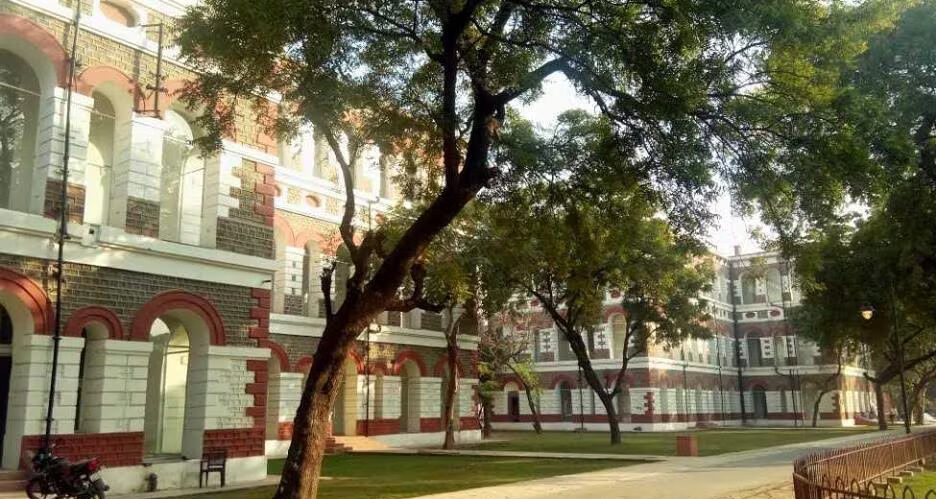After covering the last museum in Red Fort meant for the revolutionaries of India, I sat down for a cup of tea when my attention was drawn to a young boy in his teens talking to his father.
“Papa, what did Gandhi ji and Nehru ji do for the English to go away from our country?”
“Why do you ask that?” the puzzled father asked him.
“The people shown inside the museum tell a different story. They were sent to Andaman, hanged or tortured. The British committed atrocities on them but never on Congressmen. So, what did Gandhi ji do?”
“You don’t talk like that.” The father now tried to shut him down. “What will people say when they hear this? Go and read your text book.”
“What is written in text book is very different,” he said. “I had a different understanding,” the boy retorted. “Now I am confused. After visiting these places I wonder is it the fear of these people that made the British leave India?”
Seeing me listening to them, the father smiled in an embarrassed manner and said, “Ajkal ke bacchey, kuch bhi bol dete hain.” (Today’s children, they say anything). We exchanged pleasantries. On knowing that I am a Professor, he felt relieved and said, “App toh samajh sakte hain.” (You can understand this).
“No, but what he said is true.” I told the father. “Yours and my generation and even his was taught a lie that is crumbling like a pack of cards in front of his questions. That is what a museum is supposed to do to young minds.”
Neeraj and his father were from Madhya Pradesh had come to Delhi to visit its historical places. The father had brought his family, three children and wife to visit the Red Fort. Neeraj was from class twelfth and history and political science were his favorite subjects.
“We are from the land of Birsa Munda. We never expected to see him in Red Fort. Now, I know he had a contribution to our freedom struggle and how much the British were terrified of him. In fact I know one thing for sure right now. Who the British were scared of and who they weren’t.”
I told Neeraj about the museums I have visited around the world. The Holocaust museum, Martin Luther King museum, the Slavery museum, Anne Frank museum and several others. “These museums were not easy to build for the ones who had the idea to bring our forgotten history.” I explained. “They brought out a history that many people were trying to hide. It is the same here. These new museums are bringing out a part of our history that no one tried to bring out earlier.”
“Like the ‘Sengol’,” he said.
“Exactly. It is people like you, the future generations of India who must ask questions of their teachers, their elders why they did it?”
As they bade good bye and walked away, I couldn’t help reflecting. Like Neeraj, hundreds of thousands of school children will pass by these new museums and the question that will generate for them is that ‘what did Gandhi do and why were the names of these people were erased and tried to be obliterated’?
As I sat finishing my tea, another group of young boys came by. “Uncle isske first floor pe kooch dekhne layek hai kya?” (Is there anything worth seeing on the first floor?).
“Meaning?” I asked.
“Mera matlab hai ki sirf photo hai ya aur bhi kuch hai?” he asked. (I mean are there only photos or something else too?) A picture of youth looking for some fun. “Uncle, even the photographs are not nice,” he said ruefully.
I felt a moment of sadness. I also understood his reason. He wanted to take a selfie. For him and his friends, a concrete object, whatever it may be was the prime attraction. He and his friends would take a pose and click.
“Aren’t you interested in the lives of the people who gave their lives for us?” I asked.
He and his friends shrugged their shoulders and walked away from me. For a moment I wondered why I see such behavior only in India. I have been to museums in many countries. The more recent museums built worldwide, unlike Louvre, British or Uffizi try to create and tell a past that is laced with shame and humiliation for example the trauma of slavery, of extermination of colored people and Jews and their persecution. They are not written in the history text books and there are people who have made every attempt to erase it including our country in the last seventy five years.
Both the incidents are remnants of a colonial era, trans generational memories that form a part of our individual and collective national identity, one that tries to emerge from chains and the other which stays enveloped in amnesia.
The new museums are repositories of a traumatic memory left from our past. As for trauma, its language is silence and most often there is no evidence left of what transpired except a torn photograph. The memory of Jallianwalla Bagh has be created from the few bullet holes left in the wall. The memory of Cellular Jail has to be created from torn jute dress worn by the prisoners that cut through the skin even though the reality was a million times more painful.
As I walked out, I realized Bharat is in a phase of transition, leaving behind memories that were false and what generations were taught to hold as sacred and inviolate to one what are raw and poignant and pregnant with a meaning for what truly happened in our past.
The struggle between history and memory has just started in Bharat. Let us see that this struggle takes us from darkness to light and from untruth to truth as our ancient wisdom teaches us.
Rajat Mitra
Psychologist, Speaker and Author (The Infidel Next Door)
www.rajatmitra.co.in

